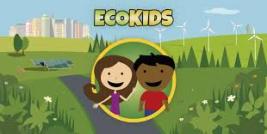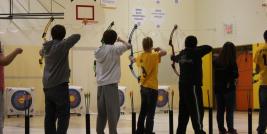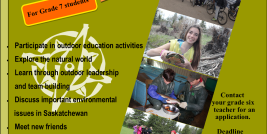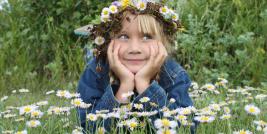Hug-A-Tree and Survive is a 45 minute children's Search and Rescue (SAR) prevention program. The goal is to teach youth:
- How not to become lost in the woods.
- What to do if they become lost.
- How to keep themselves warm and dry.
- How they can help searchers find them.
Hug-A-Tree and Survive was was developed in San Diego, California, in response to the loss of the life of a young boy, nine year old Jimmy Beveridge. In February 1981, Jimmy was camping with his parents and brothers when he became lost. Despite a valiant 3 ½ day search by law enforcement personnel, human trackers, 400 volunteer searchers, 200 marines, and search and rescue dogs, Jimmy was regrettably found dead as the result of hypothermia. Many of the people involved were deeply affected by this tragedy and wished to find a way to prevent similar mishaps from ever happening again.
Content:
- introduction and background on the program
- video showing story of a lost boy
- demonstration of garbage bag shelters, use of foot printing and whistles
- conclusion and hand out of information sheet for the student to take home
Set up:
- one (1) table for display
- data projector/screen & speakers or DVD player and TV
"For all the children who walk away, lose their direction and go astray.
So we can find where you may be, stay where you are and Hug-A-Tree"
Related Documents:
| Hug-A-Tree Colouring Book |
Online Resources:
Curriculum Connections |
|
Outcomes |
Indicators |
Grade 1 |
Health |
USC1.4 Determine and practise safe pedestrian/street behaviours and examine related safety challenges in the community. |
b,c,g |
|
|
Health |
DM1.1 Examine initial steps (i.e. Stop, Think, Do) for making basic choices regarding healthy behaviours: healthy brain, heart, and lungs; healthy relationships; pedestrian/street safety; and a healthy sense of self. |
d |
|
|
Health |
AP1.1 Apply the steps of Stop, Think, and Do (with guidance) to develop healthy behaviours related to a healthy brain, heart, and lungs; healthy relationships; pedestrian/ street safety; and a healthy sense of self. |
b |
|
|
Phys Ed |
PE1.2 Active Living Examine and express what it means to live actively each day and the personal benefits of being active. |
a,d,g,i |
Grade 2 |
Health |
USC2.5 Recognize potential safety risks in community “play areas” and determine safe practices/behaviours to identify, assess, and reduce the risks. |
b,c,d,f,g |
|
|
Health |
DM2.1 Demonstrate how, why, and when to ask for help and/or advice when discovering healthy connections related to thoughts-feelings-actions, healthy snacking, affects of illness/disease, respect, safety, and diversity. |
b,e |





